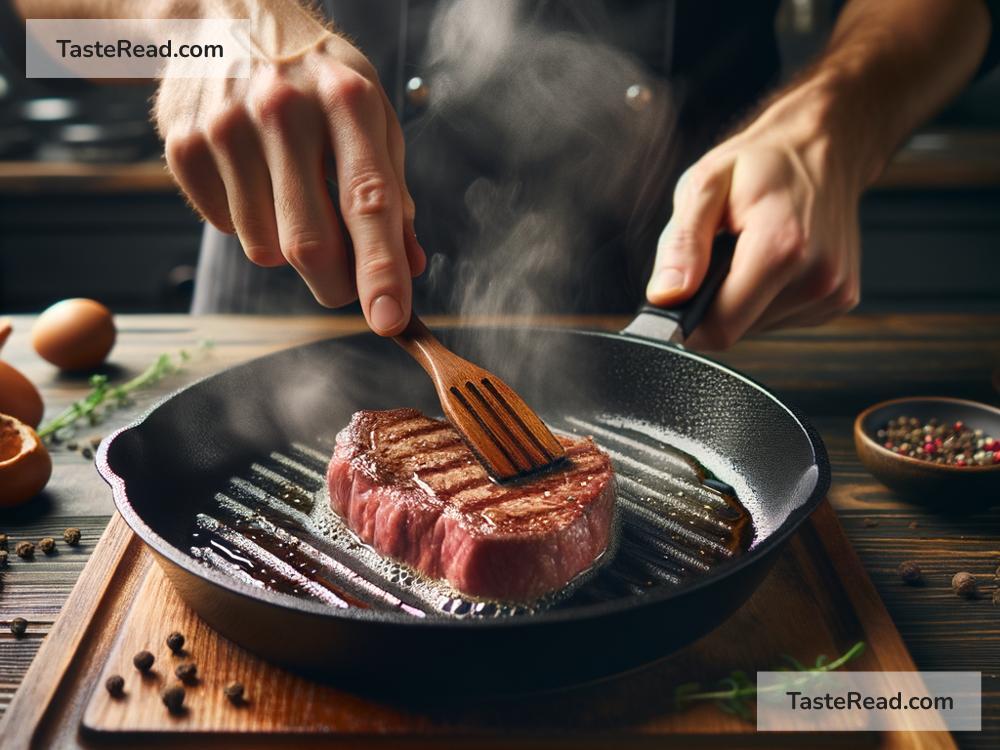The Science of Cooking with Kinetics: Techniques and Tips
Have you ever wondered why cooking is sometimes called an art and sometimes considered a science? While creativity plays a big role in the kitchen, there’s a lot of science happening behind the scenes. One key aspect of this science is kinetics—the way energy, motion, and chemical reactions come together to transform food. In this blog, we’ll explore the basics of cooking with kinetics and share a few handy techniques and tips to help you cook like a pro.
What Is Kinetics in Cooking?
The word “kinetics” comes from the Greek word “kinesis,” meaning motion, but in science, it refers to the study of how things change and react over time. In cooking, kinetics is all about how heat, energy, and time interact with food to create delicious meals. This includes processes like:
- Heat transfer: How heat moves from a pan, oven, or stovetop to your food.
- Molecular motion: How food molecules move and interact as they heat up or cool down.
- Chemical changes: How proteins, carbohydrates, and fats break down and combine during cooking.
Understanding kinetics isn’t just for scientists—it’s also for home cooks. Knowing how heat, time, and motion affect food can help you improve your cooking techniques and avoid common mistakes.
How Heat and Time Affect Food
When cooking, heat and time are the two most important factors. Here’s how they work together:
- The Power of Heat
Heat causes the molecules in food to move faster, breaking down proteins, softening fibers, and caramelizing sugars. Depending on the temperature, food can either cook gently (like simmering soup) or quickly (like searing steak).
For example:
– At low heat, food cooks slowly, allowing flavors to blend. This is perfect for slow-cooked stews or braised meats.
– At high heat, food cooks faster, which is ideal for frying, grilling, or roasting, where you want crispy exteriors and tender interiors.
- Time Is Key
The longer food stays heated, the more changes happen. However, overcooking can lead to tough proteins, mushy veggies, or burned flavors. Timing is everything! For instance, eggs cooked for a few minutes are wonderfully soft, but leave them on heat too long, and they turn rubbery.
Cooking Techniques That Use Kinetics
Almost every cooking technique relies on the principles of kinetics. Here are some popular methods and the science behind them:
-
Searing and Browning (Maillard Reaction)
Ever wonder why a golden-brown steak tastes so much better? That’s the Maillard reaction, a chemical process where amino acids (from proteins) and sugars interact under high heat. It creates complex flavors and aromas.
Tip: To get a perfect sear, pat the surface of your meat dry before cooking and use high heat with a touch of oil. Don’t overcrowd the pan—this lowers the temperature and prevents proper browning. -
Boiling and Steaming
Cooking with boiling water or steam is all about energy transfer. Water molecules heat up and transfer their energy to your food, cooking it evenly and quickly.
Tip: To preserve nutrients in veggies, steam instead of boiling. And if you’re boiling pasta, add salt to the water—it enhances flavor and slightly raises the boiling point for faster cooking. -
Baking and Roasting
These dry-heat techniques rely on convection (movement of heat through air) to cook food evenly. Baking is perfect for delicate treats like cakes, while roasting is ideal for rich, caramelized flavors in meats and veggies.
Tip: Preheat your oven to ensure even cooking. For crispy textures, roast at high heat and use a little oil. -
Sous Vide (Precision Cooking)
Sous vide involves cooking food in a vacuum-sealed bag submerged in a precisely heated water bath. This method cooks food evenly, preventing over- or under-cooking.
Tip: Use sous vide for delicate cuts of meat, seafood, or even eggs. The steady temperature ensures perfect doneness every time. -
Cooling and Freezing
Kinetics isn’t just about heat—it’s also about cold! Cooling slows down molecular motion, helping preserve flavors and textures. Freezing halts many chemical reactions entirely.
Tip: Cool leftovers quickly to preserve freshness, and freeze in airtight containers to reduce freezer burn.
Practical Tips for Cooking with Kinetics
Here are some easy tips to apply the science of kinetics in your kitchen:
-
Control Your Heat: Adjust the burner or oven temperature as needed. High heat works for quick cooking (like stir-frying), while low heat is best for slow, gentle methods (like braising).
-
Timing Matters: Set timers to avoid overcooking, and check frequently to ensure food is done the way you like it.
-
Don’t Fear Motion: Shake or stir pans when sautéing to cook food evenly. Whisking helps emulsify ingredients, like in salad dressings or mayonnaise.
-
Experiment with Temperature: Try cooking eggs at different temperatures to see how heat transforms textures. Or roast veggies at varying heat levels to observe caramelization.
-
Preheat for Precision: Always preheat ovens, pans, or grills. It ensures food cooks consistently every time.
Final Thoughts
Cooking with kinetics is like being a kitchen scientist. By mastering the relationship between heat, motion, and time, you can take your meals to the next level. Whether you’re browning a steak, baking bread, or steaming veggies, understanding the science behind the process helps you make better choices for flavor and texture.
So, the next time you step into the kitchen, pay attention to the science happening in your pots, pans, and ovens. With these kinetic cooking techniques and tips, you’re on your way to creating meals that are both delicious and scientifically perfect!


